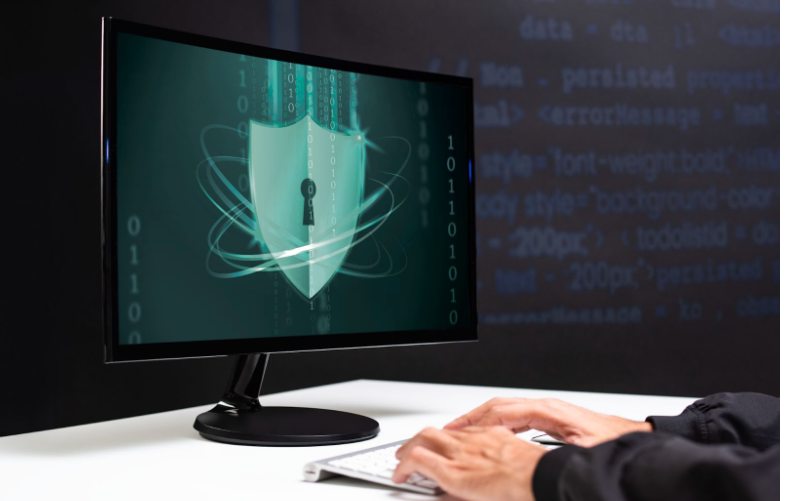| Endpoint Security for Development Environments |
| Written by Gilad David Maayan | |||
| Monday, 27 March 2023 | |||
|
The threat level of cyber attack has never been greater so there is urgent need for incorporating security as an essential part of the software development process. Here's some guidance on how to implement endpoint security. What Is Endpoint Security?Endpoint security refers to the protection of devices, such as computers, smartphones, and servers, against cyber threats. It involves implementing measures such as antivirus software, firewalls, and intrusion detection systems to secure these endpoints and prevent unauthorized access, data theft, and other malicious activities. The goal of endpoint security is to secure the entire network by protecting its entry and exit points, also known as endpoints. Endpoint security for development environments refers to the specific measures and processes that are put in place to secure the endpoints used by software developers in their work. This includes laptops, desktops, and other devices used to create, test, and deploy software applications. In a development environment, the security of endpoint devices is crucial to ensure the confidentiality, integrity, and availability of the code, intellectual property, and other sensitive information. Key security measures for development endpoints can include:
Endpoint Security SolutionsLet’s take a look at the four major types of endpoint security solutions and how they can protect development environments. 1. Endpoint Detection and Response (EDR)Endpoint Detection and Response (EDR) is a security solution that provides real-time monitoring and analysis of endpoint activity, allowing organizations to detect, respond to, and prevent security incidents. EDR tools use behavioral analysis and machine learning algorithms to identify and alert on suspicious activities, providing visibility into endpoint activities and facilitating rapid response to security incidents. EDR solutions typically provide features such as threat hunting, incident response, and forensics to help organizations quickly identify and mitigate security threats. 2. Endpoint Protection Platform (EPP)Endpoint Protection Platform (EPP) is a comprehensive security solution that combines multiple security technologies, such as antivirus software, firewalls, and intrusion detection systems, to provide complete protection for endpoint devices. These solutions are designed to be easy to deploy and manage, making them well-suited for organizations of all sizes. EPP solutions typically provide real-time monitoring and the ability to centrally manage security policies and configurations across multiple endpoints. While EPP solutions tend to focus more on protection, EDR tools focus on detection on response, which is why the two often work together to offer a more comprehensive security coverage. 3. Extended Detection and Response (XDR)Extended Detection and Response (XDR) is a security solution that extends the capabilities of EDR by integrating with other security tools and technologies, such as network security, cloud security, and security information and event management (SIEM) solutions. XDR solutions provide a unified view of security across an organization, ensuring organizations can detect, respond to, and prevent security incidents in real time, regardless of where they occur. XDR solutions aim to provide a more complete and integrated security solution, reducing the risk of security breaches and increasing the efficiency of incident response. 4. Managed Detection and Response (MDR)Managed Detection and Response (MDR) is a security solution that provides real-time monitoring and response to security incidents by security experts. MDR solutions typically combine the capabilities of EDR and XDR with the expertise of a managed security service provider (MSSP). Organizations can subscribe to MDR services managed by security experts, who monitor the security of the organization’s endpoints and provide rapid response to security incidents. MDR solutions are designed to provide organizations with a high level of security without requiring significant in-house security expertise, making them well-suited for organizations of all sizes. Using Endpoint Security Solutions in Development EnvironmentsEDR, EPP, XDR, and MDR are cybersecurity solutions that can help protect development environments. Here are some ways these solutions can be used in development environments:
In general, it is important to ensure that cybersecurity solutions are integrated into the development process from the start. This can involve implementing security measures such as access controls, encryption, and secure coding practices, as well as ensuring that endpoint devices and development environments are kept up to date with the latest security patches and updates. By implementing these measures and utilizing cybersecurity solutions, development environments can be more effectively protected against cyber threats. ConclusionIn conclusion, implementing endpoint security in development environments is an essential part of software development and should be taken seriously to ensure the security of sensitive information and the integrity of the software being developed. Endpoint security solutions, such as EDR, EPP, XDR, and MDR, can provide organizations with the visibility, response, and protection capabilities they need to secure their development environments. By implementing best practices for endpoint security, such as access controls, encryption, code reviews, threat modeling, testing, firewalls, backups, and patch management, organizations can significantly reduce the risk of security incidents and protect their sensitive information and the integrity of the software they are developing.
Related ArticlesFive Tips For Securing GitOps Environments Secure Coding Best Practices for 2022 Insights Into Successful Software Delivery Happy Developers Think More About Security To be informed about new articles on I Programmer, sign up for our weekly newsletter, subscribe to the RSS feed and follow us on Twitter, Facebook or Linkedin.
Comments
or email your comment to: comments@i-programmer.info
|
|||
| Last Updated ( Monday, 27 March 2023 ) |




